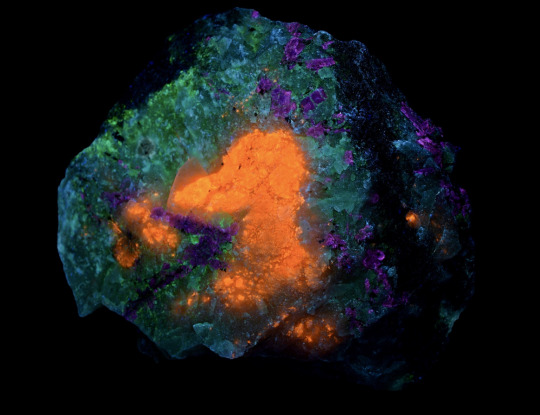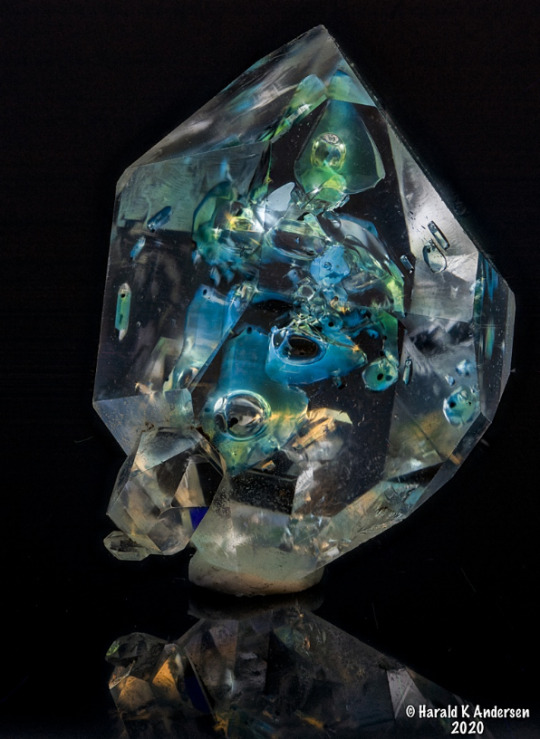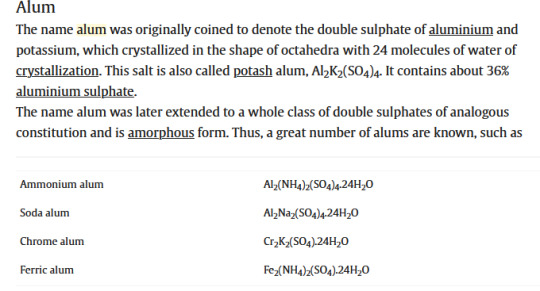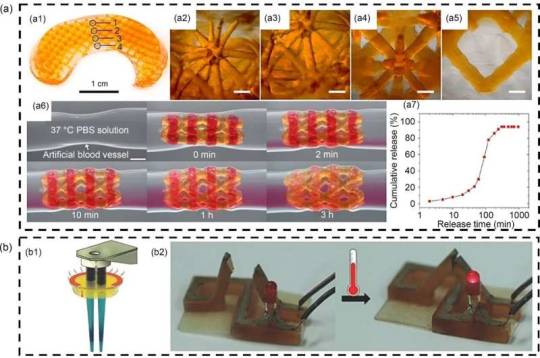#China Petroleum
Explore tagged Tumblr posts
Text
Mike Huckabee’s “Kids Guide to the Truth About Climate Change” Shows the Changing Landscape of Climate Denial
Producers of climate misinformation are targeting kids and families, delivering an updated message that acknowledges global warming, but minimizes the influence of human emissions. Continue reading Untitled

View On WordPress
#american petroleum institute#barbara denson#big oil#book#children#china#climate change#CO2#CO2 coalition#ever bright media#exxonmobil#fossil fuel#heartland institue#kyoto protocol#lies#mike huckabee#prager university#propaganda#science
5 notes
·
View notes
Video
youtube
FARMCON 2023 - Peter Zeihan
Peter Zeihan is a geopolitical strategist: the study of how people and places impact financial, economic, cultural, political and military developments. He presents customized executive briefings to a wide array of audiences which include, but are not limited to, financial professionals, Fortune 500 firms, energy investors, and a mix of industrial, power, agricultural and consulting associations and corporations. Zeihan is also an award-winning author with NY Times Best Seller, "The End of the World is Just the Beginning". This book maps out the next world: a world where countries or regions will have no choice but to make their own goods, grow their own food, secure their own energy, fight their own battles, and do it all with populations that are both shrinking and aging. With Russia's latest military moves and all of the uncertainty with China, I thought there was no better time to hear from Zeihan and take a look through his lens. Remember, with any business, you need to get the larger macro view correct. This is a must for gaining a better understanding of the larger macro picture!
FARMCON 2024 - January 3rd and 4th in Kansas City
#Peter Zeihan#USA#agriculture#farming#food#canada#mexico#germany#china#brazil#Russia#ukraine#energy#oil#petroleum#trade#transportation
7 notes
·
View notes
Text
Catar cierra su segundo gran acuerdo de suministro de gas natural licuado con China
Catar cerró el martes su segundo gran acuerdo de suministro de gas con una empresa controlada por el Estado chino en menos de un año, lo que sitúa a Asia claramente por delante en la carrera por asegurarse el suministro procedente del enorme proyecto de expansión de la producción de Doha. China National Petroleum Corporation (Cnpc) y QatarEnergy firmaron un acuerdo de 27 años, en virtud del…

View On WordPress
0 notes
Text
From the article:
[T]here are now signs that China’s thirst for crude is reaching a peak sooner than expected, a development that has sent shockwaves through the oil market. This week, China said its oil imports had fallen nearly 2 per cent, or 240,000 barrels a day, to just over 11mn b/d in 2024 compared with the year before, the first decline in two decades barring the disruption during the Covid pandemic[...]. [T]he decline stems from longer-term trends too. There was a boom in trucks switching from diesel to liquefied natural gas, and, most importantly, the rising number of electric vehicles helped to depress sales of petrol and diesel. Sales of both road fuels peaked in 2023, according to China National Petroleum Corp, and will now fall by 25-40 per cent over the next decade. In December, Sinopec, China’s biggest refiner, brought forward its forecast for crude oil consumption to reach a peak to 2027, compared with the range it previously gave of between 2026 and 2030. The implications of China hitting peak oil are enormous. If Chinese demand is reaching a plateau that would fulfil projections by the IEA of global oil demand peaking before 2030. The forecast sustains hope for the world to reach net zero carbon emissions by 2050."
#peak oil#climate change#global warming#good news#hope#environment#fossil fuels#oil#ecoanxiety#climate anxiety#hopepunk#clean energy#electric vehicles#china
199 notes
·
View notes
Text
In all seriousness it is insane and frankly extremely selfish of those living in their ivory towers to point a finger at Mongolia and say that Mongolia should be punished for not arresting Putin. Have you fucking looked at a map? Do you know that Mongolia is landlocked between Russia and China? Do you know how much the Mongolian economy depends on Russia? Do you know that Mongolia is dependent on Russia for petroleum? It's electricity, gasoline?? Or are you just bunch of ignorant fucks, or maybe you don't care if Mongolia is thrown to the wolves.
Not surprised because a lot of these clowns I see online who are calling on Mongolia to arrest Putin were previously posting insanely racist shit about Mongolia. Now people are saying shit like "the West should sanction Mongolia to the stone age" oh you're expecting a third world country to arrest the leader of Russia - a country who they depend on multiple necessities for, but you and all your Western powers cannot even arrest Netanyahu ?? Give me a fucking break
194 notes
·
View notes
Text



“Name me a single objective we’ve ever set out to accomplish that we’ve failed on. Name me one, in all of our history. Not one!”
-President Joe Biden, August 16, 2023
Joe Biden in one of his now accustomed angry “get off my grass” moods dared the press to find just one of his policies/objectives that has not worked. Silence followed.
Perhaps it was polite to say nothing, given even the media knows almost every enacted Biden policy has failed.
Here is a summation of what he should instead apologize for.
Biden in late summer 2021 sought a 20th anniversary celebration of 9/11 and the 2001 subsequent invasion of Afghanistan. He wished to be the landmark president that yanked everyone out of Afghanistan after 20 years in country. But the result was the greatest military humiliation of the United States since the flight from Vietnam in 1975.
Consider the ripples of Biden’s disaster. U.S. deterrence was crippled worldwide. China, Russia, Iran, and North Korea almost immediately began to bluster or return to their chronic harassment of U.S. and allied ships and planes. We left thousands of allied Afghans to face Taliban retribution, along with some Western contractors.
Biden abandoned a $1 billion embassy, and a $300 million remodeled Bagram airbase strategically located not far from China and Russia, and easily defensible. Perhaps $50 billion in U.S. weaponry and supplies were abandoned and now find their way into the international terrorist mart.
All our pride flags, our multimillion gender studies programs at Kabul University, and our George Floyd murals did not just come to naught, but were replaced by the Taliban’s anti-homosexual campaigns, burkas, and detestation of any trace of American popular culture.
Vladimir Putin sized up the skedaddle. He collated it with Biden’s unhinged quip that he would not get too excited if Putin just staged a “minor” invasion of Ukraine. He remembered Biden’s earlier request to Putin to modulate Russian hacking to exempt a few humanitarian American institutions. Then Russia concluded of our shaky Commander-in-Chief that he either did not care or could do nothing about another Russian invasion.
The result so far is more than 500,000 dead and wounded in the war, a Verdun-stand-off along with fortified lines, the steady depletion of our munitions and weapon stocks, and a new China/Russia/Iran/North Korean axis, with wink and nod assistance from NATO Turkey.
Biden blew up the Abraham accords, nudged Saudi Arabia and the Gulf States over to the dark side of Iran, China, and Russia. He humiliated the U.S. on the eve of the midterms by callously begging the likes of Iran, Venezuela, Russia, and Saudi Arabia to pump more oil that he had damned as unclean at home and cut back its production. In Bidenomics, instead of producing oil, the president begs autocracies to export it to us at high prices while he drains the nation’s strategic petroleum reserve for short-term political advantage.
Biden deliberately alienated Israel by openly interfering in its domestic politics. He pursued the crackpot Iran Deal while his special Iranian envoy was removed for disclosing classified information.
No one can explain why Biden ignored the Chinese balloon espionage caper, kept mum about the engineered Covid virus that escaped the Wuhan lab, said not a word about a Chinese biolab discovered in rural California, and had his envoys either bow before Chinese leaders or take their insults in silence—other than he is either cognitively challenged or leveraged by his decade-long grifting partnership with his son Hunter.
Yet another Biden’s legacy will be erasing the southern border and with it, U.S. immigration law. Over seven million aliens simply crossed into the U.S. illegally with Biden’s tacit sanction—without audits, background checks, vaccinations, and COVID testing, much less English fluency, skills, or high-school diplomas.
Biden’s only immigration accomplishment was to render the entire illegal sanctuary city movement a cruel joke. Given the flood, mostly rich urban and vacation home dwellers made it very clear that while they fully support millions swarming into poor Latino communities of southern Texas and Arizona, they do not want any illegal aliens fouling their carefully cultivated nests.
Biden is mum about the 100,000 fentanyl deaths from cartel-imported and Chinese-supplied drugs across his open border. He seems to like the idea that Mexican President Obrador periodically mouths off, ordering his vast expatriate community to vote Democratic and against Trump.
Despite all the pseudo-blue collar dissimulation about Old Joe Biden from Scranton, he has little empathy for the working classes. Indeed, he derides them as chumps and dregs, urges miners to learn coding as the world covets their coal, and studiously avoids getting anywhere near the toxic mess in East Palestine, Ohio, or so far the moonscape on Maui.
Bidenomics is a synonym for printing up to $6 billion dollars at precisely the time post-Covid consumer demand was soaring, while previously dormant supply chains were months behind rebooting production and transportation. Biden is on track to increase the national debt more than any one-term president.
In Biden’s weird logic, if he raised the price of energy, gasoline, and key food staples 20-30 percent since his inauguration without a commensurate rise in wages, and then saw the worst inflation in 40 years occasionally decline from record highs one month to the next, then he “beat inflation.”
But the reason why more than 60 percent of the nation has no confidence in Bidenomics is because it destroyed their household budgets. Gas is nearly twice what it was in January 2021. Interest rates have about tripled. Key staple foods are often twice as costly—meat, vegetables, and fruits especially.
Biden has ended through his weaponized Attorney General Merrick Garland the age-old American commitment to equal justice under the law. The FBI, DOJ, CIA, and IRS are hopelessly politically compromised. Many of their bureaucrats serve as retrieval agents for lost Biden family incriminating laptops, diaries, and guns. In sum, Biden criminalized opposing political views.
Biden has unleashed the administrative state for the first time in history to destroy the Republican primary front runner and his likely opponent. His legacy will be the corruption of U.S. jurisprudence and the obliteration of the American reputation for transparent permanent government that should be always above politics, bribery, and corruption.
If in the future, an on-the-make conservative prosecutor in West Virginia, Utah, or Mississippi wishes to make a national name, then he has ample precedent to indict a Democrat President for receiving bad legal advice, questioning the integrity of an election, or using social media to express doubt that the new non-Election-Day balloting was on the up-and-up, or supposedly overvaluing his real estate.
The Biden family’s decade-long family grifting will likely expose Joe Biden as the first president in U.S. history who fitted precisely the Constitution’s definition of impeachment and removal—given his “high crimes and misdemeanors” appear “bribery”-related. If further evidence shows he altered U.S. foreign policy in accordance with the wishes from his benefactors in Ukraine, China, or Romania, then he committed constitutionally-defined “treason” as well.
Defunding the police, and pandemics of exempted looting, shoplifting, smashing, and grabbing, and carjacking merit no administrative attention. Nor does the ongoing systematic destruction of our blue bicoastal cities, Los Angeles, New York, Portland, San Francisco, Seattle, and Washington, D.C. All that, along with the disasters in East Palestine or Maui are out of sight, out of mind from a day at the beach at Biden’s mysteriously purchased nearly 6,000 square-foot beachfront mansion.
Biden ran on Barack Obama-like 2004 rhetoric (“Well, I say to them tonight, there is not a liberal America and a conservative America — there is the United States of America).”
And like Obama, he used that ecumenical sophistry to gain office only to divide further the U.S. No sooner than he was elected, we began hearing from the great unifier eerie screaming harangues about “semi-fascists” and “ultra-MAGA” dangerous zealots, replete with red-and black Phantom of the Opera backdrops.
What followed the unifying rhetoric was often amnesties and exemptions for violent offenders during the 120 days of rioting, looting, killing, and attacks on police officers in summer 2020. In contrast, his administration lied when it alleged that numerous officers had died at the hands of the January 6 rioters. In addition, the Biden administration mandated long-term incarceration of many who committed no illegal act other than acting like buffoons and “illegally parading.”
The message was exemptions for torching a federal courthouse, a police precinct, or historic church or attempting to break into the White House grounds to get a president and his family—but long prison terms for wearing cow horns, a fur vest, and trespassing peacefully like a lost fool in the Capitol.
Finally, Biden’s most glaring failure was simply being unpresidential. He snaps at reporters, and shouts at importune times. He can no longer read off a big-print teleprompter. Even before a global audience, he cannot kick his lifelong creepy habit of turkey-gobbling on children necks, blowing into their ears and hair of young girls, and squeezing women far too long and far too hard.
His frailty redefined American presidential campaigning as basement seclusion and outsourcing propaganda to the media. And his disabilities only intensified during his presidency. Biden begins his day late and quits early. He has recalibrated the presidency as a 5-hour, 3-day a week job.
If Trump was the great exaggerator, Biden is our foremost liar. Little in his biography can be fully believed. He lies about everything from his train rides to the death of his son to his relationship with Biden-family foreign collaborators, to vaccinations to the economy. Anytime Biden mentions places visited, miles flown, or rails ridden, he is likely lying.
Biden continues with impunity because the media feels that a mentally challenged fabulist is preferable to Donald Trump and so contextualizes or ignores his falsehoods. Never has a U.S. president fallen and stumbled or gotten lost on stage so frequently—or been a single small trip away from incapacity.
So, yes, Biden’s initiatives have succeeded only in the sense of becoming successfully enacted—and therefore nearly destroying the country.
541 notes
·
View notes
Text
Part 2 of the UV reactives











Chkalovite, Tugtupite, Kvanefjeld, Greenland, photo by Daniel Montero
Ussingite, Sodalite, Leucophanite, Tugtupite, Tunulliarfik Fjord, Greenland, photo by Daniel Montero
Calcite, Fluorite, Willemnite, Aragonite, Purple Passion Mine, USA, photo by Daniel Montero
Calcite, Potosi Mine, Mexico, photo by Rob Lavinsky
Quartz, Opal, Montana Aserrada, Spain, photo by Volker Betz
Calcite, Fluorite, Pure Potential Mine, USA, Photo by Christopher Clemens
Petroleum, Quartz, Pakistan, photo by Harald K Andersen
Rabbittite, Barbora Adit, Czech Republic, photo by Charles D Young
Gypsum, Shelford Sand Pit, UK, photo by Kaegen Lau
Petrified Wood, CA, USA, photo by Nicholas Rondilone
Plumbogummite, Pyromorphite, Yangshuo Mine, China, photo by Christopher Clemens
#geology#mineral#photography#chkalvoite#tugtupite#daniel montero#ussingite#sodalite#leucophanite#calcite#fluroite#willemnite#aragonite#rob lavinsky#quartz#opal#volker betz#christopher clemens#petroleum#harald k andersen#rabbittite#charles d young#gypsum#kaegen lau#petrified wood#nicholas rondilone#plumbogummite#pyromorphite#uv reactive#uv
384 notes
·
View notes
Note
Price controls would help the middle class why do you on your side oppose them. Is there a reason other than it came form Democrats?
Price controls are a very bad idea. It doesn't matter if it comes from a Republican like Nixon or a Democrat like Harris. Price controls violate the law of supply and demand and are based on the idea that every supplier is gouging. Some do gouge, most do not and that is crucial.
If you look at the data most suppliers are making a very narrow profit. Their costs are up due to runaway inflation which was initiated by Biden's short sighted move to artificially shrink the energy supply, primarily petroleum based energy. Transportation, fertilizer, packaging, and processing costs have gone through the roof. This cost is naturally passed to the consumers or else the suppliers would soon be out of business.
It doesn't matter where price controls have been established. Nixon's America, Socialist Nicaragua, Cuba, East Germany, the Soviet Union. Mao's China or Xi's China the results are all the same. They will result in shortages, businesses going under, burgeoning black markets, civil unrest, unemployment, and in the end failure. Prices will not go down and products will be absent from the shelves.
79 notes
·
View notes
Text

LETTERS FROM AN AMERICAN
November 26, 2024
Heather Cox Richardson
Nov 27, 2024
Today presented a good example of the difference between governance by social media and governance by policy.
Although incoming presidents traditionally stay out of the way of the administration currently in office, last night, Trump announced on his social media site that he intends to impose a 25% tariff on all products coming into the U.S. from Mexico and Canada “until such time as Drugs, in particular Fentanyl, and all Illegal Aliens stop this Invasion of our Country!” Trump claimed that they could solve the problem “easily” and that until they do, “it is time for them to pay a very big price!”
In a separate post, he held China to account for fentanyl and said he would impose a 10% tariff on all Chinese products on top of the tariffs already levied on those goods. “Thank you for your attention to this matter,” he added.
In fact, since 2023 there has been a drop of 14.5% in deaths from drug overdose, the first such decrease since the epidemic began, and border patrol apprehensions of people crossing the southern border illegally have fallen to the lowest number since August 2020, in the midst of the pandemic. In any case, a study by the libertarian Cato Institute shows that from 2019 to 2024, more than 80% of the people caught with fentanyl at ports of entry—where the vast majority of fentanyl is seized—were U.S. citizens.
Very few undocumented immigrants and very little illegal fentanyl come into the U.S. from Canada.
Washington Post economics reporter Catherine Rampell noted that Mexico and Canada are the biggest trading partners of the United States. Mexico sends cars, machinery, electrical equipment, and beer to the U.S., along with about $19 billion worth of fruits and vegetables. About half of U.S. fresh fruit imports come from Mexico, including about two thirds of our fresh tomatoes and about 90% of our avocados.
Transferring that production to the U.S. would be difficult, especially since about half of the 2 million agricultural workers in the U.S. are undocumented and Trump has vowed to deport them all. Rampell points out as well that Project 2025 calls for getting rid of the visa system that gives legal status to agricultural workers. U.S. farm industry groups have asked Trump to spare the agricultural sector, which contributed about $1.5 trillion to the U.S. gross domestic product in 2023, from his mass deportations.
Canada exports a wide range of products to the U.S., including significant amounts of oil. Rampell quotes GasBuddy’s head of petroleum analysis, Patrick De Haan, as saying that a 25% tax on Canadian crude oil would increase gas prices in the Midwest and the Rockies by 25 cents to 75 cents a gallon, costing U.S. consumers about $6 billion to $10 billion more per year.
Canada is also the source of about a quarter of the lumber builders use in the U.S., as well as other home building materials. Tariffs would raise prices there, too, while construction is another industry that will be crushed by Trump’s threatened deportations. According to NPR’s Julian Aguilar, in 2022, nearly 60% of the more than half a million construction workers in Texas were undocumented.
Construction company officials are begging Trump to leave their workers alone. Deporting them “would devastate our industry, we wouldn’t finish our highways, we wouldn’t finish our schools,” the chief executive officer of a major Houston-based construction company told Aguilar. “Housing would disappear. I think they’d lose half their labor.”
Former trade negotiator under George W. Bush John Veroneau said Trump’s plans would violate U.S. trade agreements, including the United States–Mexico–Canada Agreement (USMCA) that replaced the 1994 North American Free Trade Agreement that Trump killed. The USMCA was negotiated during Trump’s own first term, and although it was based on NAFTA, he praised it as “the fairest, most balanced, and beneficial trade agreement we have ever signed into law. It’s the best agreement we’ve ever made.”
Trump apologists immediately began to assure investors that he really didn’t mean it. Hedge fund manager Bill Ackman posted that Trump wouldn’t impose the tariffs if “Mexico and Canada stop the flow of illegal immigrants and fentanyl into the U.S.” Trump’s threat simply meant that Trump “is going to use tariffs as a weapon to achieve economic and political outcomes which are in the best interest of America,” Ackman wrote.
Iowa Republican lawmaker Senator Chuck Grassley, who represents a farm state that was badly burned by Trump’s tariffs in his first term, told reporters that he sees the tariff threats as a “negotiating tool.”
Foreign leaders had no choice but to respond. Mexican president Claudia Sheinbaum issued an open letter to Trump pointing out that Mexico has developed a comprehensive immigration system that has reduced border encounters by 75% since December 2023, and that the U.S. CBP One program has ended the “caravans” he talks about. She noted that it is imperative for the U.S. and Mexico jointly to “arrive at another model of labor mobility that is necessary for your country and to address the causes that lead families to leave their places of origin out of necessity.”
She noted that the fentanyl problem in the U.S. is a public health problem and that Mexican authorities have this year “seized tons of different types of drugs, 10,340 weapons, and arrested 15,640 people for violence related to drug trafficking,” and added that “70% of the illegal weapons seized from criminals in Mexico come from your country.” She also suggested that Mexico would retaliate with tariffs of its own if the U.S. imposed tariffs on Mexico.
Canadian prime minister Justin Trudeau did not go that far but talked to Trump shortly after the social media post. The U.S. is Canada’s biggest trading partner, and a 25% tariff would devastate its economy. The premier of Alberta, Danielle Smith, seemed to try to keep her province’s oil out of the line of fire by agreeing with Trump that the Canadian government should work with him and adding, “The vast majority of Alberta’s energy exports to the US are delivered through secure and safe pipelines which do not in any way contribute to these illegal activities at the border.”
Trudeau has called an emergency meeting with Canada’s provincial premiers tomorrow to discuss the threat.
Spokesperson for the Chinese embassy in Washington Liu Pengyu simply said: “No one will win a trade war or a tariff war” and “the idea of China knowingly allowing fentanyl precursors to flow into the United States runs completely counter to facts and reality.”
In contrast to Trump’s sudden social media posts that threaten global trade and caused a frenzy today, President Joe Biden this evening announced that, after months of negotiations, Israel and Lebanon have agreed to a ceasefire brokered by the U.S. and France, to take effect at 4:00 a.m. local time on Wednesday. “This is designed to be a permanent cessation of hostilities,” Biden said.
Lebanon’s Iran-backed Hezbollah attacked Israel shortly after Hamas’s attack of October 7, 2023. Fighting on the border between Israel and Lebanon has turned 300,000 Lebanese people and 70,000 Israelis into refugees, with Israel bombing southern Lebanon to destroy Hezbollah’s tunnel system and killing its leaders. According to the Lebanese Ministry of Public Health, Israeli attacks have killed more than 3,000 people and injured more than 13,000, while CBS News reports that about 90 Israeli soldiers and nearly 50 Israeli civilians have been killed in the fighting. Under the agreement, Israel’s forces currently occupying southern Lebanon will withdraw over the next 60 days as Lebanon’s army moves in. Hezbollah will be kept from rebuilding.
According to Laura Rozen in her newsletter Diplomatic, before the agreement went into effect, Israel increased its airstrikes in Beirut and Tyre.
When he announced the deal, Biden pushed again for a ceasefire in Gaza, whose people, he said, “have been through hell. Their…world is absolutely shattered.” Biden called again for Hamas to release the more than 100 hostages it still holds and to negotiate a ceasefire. Biden said the U.S. will “make another push with Turkey, Egypt, Qatar, Israel, and others to achieve a ceasefire in Gaza with the hostages released and the end to the war without Hamas in power.”
Today’s announcement, Biden said, brings closer the realization of his vision for a peaceful Middle East where both Israel and a Palestinian state are established and recognized, a plan he tried to push before October 7 by linking Saudi Arabia’s normalization of relations with Israel to a Palestinian state. Biden has argued that such a deal is key to Israel’s long-term security, and today he pressed Israel to “be bold in turning tactical gains against Iran and its proxies into a coherent strategy that secures Israel’s long-term…safety and advances a broader peace and prosperity in the region.”
“I believe this agenda remains possible,” Biden said. “And in my remaining time in office, I will work tirelessly to advance this vision of—for an integrated, secure, and prosperous region, all of which…strengthens America’s national security.”
“Today’s announcement is a critical step in advancing that vision,” Biden said. “It reminds us that peace is possible.”
LETTERS FROM AN AMERICAN
HEATHER COX RICHARDSON
#Heather Cox Richardson#Letters From An American#American History#justice#bribes#billionaires#rule of law#plunder#economic madness#tariffs#deportation
17 notes
·
View notes
Text
I think I'm slowly getting a picture of a narrative. This is tricky though. If I had uh- known what the fuck I was doing six months ago, I would've titled the presentation, "Alum mining, trade, and metallurgy from Bronze Age to Present" and called it a day.
The lax definition of alum's chemistry also makes it really hard to pin down. It ranges from hydrous to anhydrous (impure and pure) aluminum sulfate salt to aluminum clay. Civilizations until the Roman era just kind of pointed at white shit, called it alum, licked it to see if it was sour (not salt) and tossed it in the chemical vat.
There were also specific locales for the good shit. So instead of saying 'alunite', you'd say 'alum from the Hittites', or 'alum from Egypt'. One could be used for tanning, but the other was used for a fancy blue glaze (cobalt-clay). You could also produce alum from alunite, like on the isle of Lesbos (Sappho historical romance novel with alum when??)
But. Within all this. You have the Babylonians primarily using it as a tanning agent and wool-dyeing. The Egyptians used it as a glaze, for pottery, and medicinal/metallurgical uses. Apparently blue beads were making it all the way to China and Scandinavia at this time? The Romans took the metallurgical uses and cranked that up to 11. After the fall of Rome, the Arabs used alum for all the above and Germany was also using it metallurgically, but my research ends here right now.
In the present, alum is still used as a mordant (dyeing agent), but is more often used as a water treatment flocculant (filtering impurities). It's also more rigorously defined as either ammonium, potassium, or sodium hydrous aluminum sulfate. Whether we still mine it is unclear?? It doesn't seem to be the case: we mine aluminum, get aluminum oxide, which either goes to Iceland to be made into pure aluminum, or is sold separately and then added to Na2(SO4) to make alum.
It doesn't really pack the same punch I wanted it to with clothing though, because it's not really used for that. Chromium sulfate is now the primary mordant if you're doing chromium tanning, which is environmentally bad and kind of like nuking a hide to make it tan fast. I guess I can track down where the chromium is coming from, and how they make that.
This isn't even getting involved in plastic production, or rayon, or nylon, or the history of fast fashion and petroleum. I think the end line of this will have to be something vague and unspecific, like "disregarding the non-renewable resources that go into <I want to say artistic, but they're not artistic. The proper term is probably female-driven industries lol> fundamental human tools can lead us to overlook industries that have just as much impact - economically and socially - on geopolitics."
... I can already see the first question on that being, "what are some other non-renewable resources you think have been overlooked?" :') ahh, idk. I've been reading for 30hr. I'm going to go to sleep. I'll run away from the podium or smthg.
to do: I should reread Al-Razi with alum in mind... the translator is not Levey, so I have to chemically check all the names she gives minerals. But I distinctly remember alum coming up several times and tripping me up.
Also chromium sulfate manufacturing/mining; saving this chrome/ferric reference because I haven't seen them written altogether anywhere else.

#I'm so tired but I'm a little closer than I was yesterday lol. That ending isn't terrible. Not great given what I planned to present#but very much still in the realm of my abstract and mining engineering.#That's kind of the chain on my wrist lol. I do still have to make this about mining engineering. There are a bunch of chemists here.#They are going to come to this presentation asking WHY clothing and ideally I still make the thing come back to mining engineering and#why systematic oppression under nonrenewable resource-driven industries matters.#Bits of my abstract from six months ago are popping into my head and making me laugh. I'm also technically supposed to cover the#/technology/ of all these civilization while /using/ alum. Oh... past!pulta you really got us in it now.#ptxt#alum#edit: actually zinc and lead oxide would make a really good 'underappreciated ancient nonrenewables' list.#Yeah lead was common af but it also made up the ancient world's pipe system and ho baby it's so sexy and fun.
12 notes
·
View notes
Text
If anyone was under any delusion that Donald Trump was not going to be as bonkers as he said he would be, then his announcement on Tuesday that he would slap a 25% tariff on all imports from Canada and Mexico (and deeper tariffs on China) should remove all doubt.
“Tariff” has become the economic word of the year thanks to the incoming US president.
It is no surprise that there has been a spike in Americans searching “What is a tariff?” on Google (sadly more people are asking that now, rather than before the election).
The answer is this: a tariff is essentially an import tax.
And despite what Trump might tell you, it is not paid by the country or the company that is exporting things to your country.
A 25% tariff means anyone importing things from – in this instance Canada or Mexico – to the US will now have to pay a 25% tax on the good. So, something that cost $100, now costs you $125.
If you are then selling that item or using it to build something that is then sold, that cost is of course going to be passed on to your customers.
Tariffs raise prices much like the GST raised the prices of things – and like the GST it hurts people on low and middle incomes the most.
Canadians and Mexicans will lose out as well because American importers will look to get goods from elsewhere because now those products are more expensive to buy. Maybe they will buy American-made items; more likely they’ll just import them from another country.
But the world economy is complex. A lot of what Americans import are things used by American companies to make their own products.
About 35% of what the US imports from Canada is petroleum – either refined, crude or gas – so the tariff now raises the price of that. Same for aluminium products and wood and all manner of other “input” goods.
That means the cost of overall production in America also rises.
So, not good.
And you can expect Mexico and Canada to retaliate with their own tariffs against US imports.
This would hurt the US economy because Canada and Mexico are America’s biggest export destinations:


The Mexican president is already announcing this will happen.
Welcome to a trade war – where no one really wins, because everyone just pays more for things.
Australia used to have some very high tariffs – especially for manufacturing and agriculture.
But since Gough Whitlam, who cut tariffs by 25% in 1973, the drive has been to lower them:


The big drops occurred during the 1980s and 1990s as the Hawke and Keating governments sought to make Australian industries compete with the rest of the world.
As Bob Hawke told parliament in his 1991 “Building a Competitive Australia” speech, the result of these tariffs was “inefficient industries that could not compete overseas; and higher prices for consumers and higher costs for our efficient primary producers”.
Because tariffs keep import prices high, local industries can become rather inefficient and lazy.
In the 1980s imported cars had a 57.5% tariff. It meant Australian cars could be poorly made with few features that were standard in Europe and the local companies didn’t have to worry about you buying the better made European car because they were far too expensive.
And so down came the tariffs from the 57.5% rate to 35% by 1991 and then by 2.5% a year to a 15% rate in 2000.
The impact on car prices is pretty clear:

From 1972 to 1996 car prices rose essentially in line with overall inflation. Since 1996, inflation has risen 108% while car prices have fallen 12%.
That’s the good news – cheaper cars for all!
Not so good if you had a job making one though.
The problem with tariffs is that while there are clear benefits to the economy (and society) from reducing them from very high levels to low levels, the benefits diminish with each cut.
This is pretty obvious from the improvements in productivity in the 1990s when the big cuts were made on manufacturing tariffs, and the only small improvements after then even though the smaller tariffs kept being cut:

The tariff of 15% brought cheaper, better cars onto the market, forced the local industry to improve in order to compete, and yet still gave it just enough protection to be able to compete against the massive car producers of Japan, the United States and Germany.
But the tariff cuts kept going.
The tariff on passenger motor vehicles dropped to 10% in 2005 and 5% in 2010.
And in 2008 Mitsubishi announced it would stop local production.
Government subsidies kept the industry going but Joe Hockey as treasurer ended that assistance.
And in 2013 Ford and Holden announced they would stop local production.
And then in 2014 Toyota announced it too would stop local production.
And now just 6% of all employed work is in manufacturing, compared with more than 20% in the 1970.
But Australia is not alone in this – in the 1950s about 30% of all workers in the US worked in manufacturing, now it is just 8%:

And this brings us back to Trump.
Why put tariffs on Canada and Mexico and China (and other nations including Australia) if it is just going to raise prices?
The theory is that it will bring back the factories and jobs.
Alas tariffs are a bit like a bath plug – they keep the water at a certain level but if you take it out the level goes down, and putting the plug back won’t cause the water to rise.
American manufacturing might get more work but mostly it will just take workers from other sectors that are not as protected or which get hurt more by tariffs other nations apply.
The big question though is: is this all just bluff?
Trump is great at saying he will do something, not doing it, saying he did and declaring some huge victory when nothing actually happened.
Economists and anyone who buys products imported or made from imports will be hoping this is what he intends this time.
10 notes
·
View notes
Text

Recalled Barbie Sunglasses from 2001
In cooperation with the U.S. Consumer Product Safety Commission (CPSC), IMT Accessories, of New York, N.Y., is recalling about 70,000 BarbieTM Sunglasses. The frames of the sunglasses can break, allowing the petroleum distillate and floating glitter to leak out. Petroleum distillates could be harmful to children's eyes and skin and could be fatal if ingested. IMT Accessories has received one report of a six-year-old child who received chemical burns in her right eye as a result of petroleum distillates leaking from the sunglasses when she was playing. The recalled sunglasses have a pink tint to the eyeglasses, have floating glitter in the temple of the sunglasses, say "BarbieTM" and "Mattel®" on the left side of the earpiece, and say "China" on the right side.
32 notes
·
View notes
Text
HURRICANE: Communities across the south are being told to prepare for extended power outages as a result of a massive short of critical electrical equipment. It turns out the Biden-Harris regime hasn't just sent the bulk of our artillery shells to Ukraine - they've also sent them our nation's stockpile of critical electrical equipment.
The U.S. has always kept a stockpile of critical electrical equipment—like transformers and switchgear—to quickly restore power in the aftermath of disasters such as Hurricane Helene.
Now, with 360 substations in desperate need of new transformers, the country should be ready to respond. But here’s the catch: the Biden-Harris administration recklessly drained our stockpile by sending these crucial resources to Ukraine.
So while they're prioritizing foreign aid, millions of Americans could be left in the dark for months, suffering through extended power outages because of their poor decision-making. Once again, it’s America last under this regime.
Oh and don't get me started on selling our nation's strategic petroleum supply to China..
9 notes
·
View notes
Note
holy shit new music !! may i ask which man the new song is about 👁
Out With A Bang is a work of fiction and any similarity to actual persons, living or dead, is purely coincidental. On a completely unrelated note, here is a list of interesting actual persons who are alive today and have real names and addresses:
Patrick Pouyanné, Chairman and CEO, TotalEnergies Helge Lund, Chairman, BP Bernard Looney, CEO, BP Amin H. Nasser, CEO, Saudi Aramco Yasir Al-Rumayyan, Chairman, Saudi Aramco Zhang Yuzhuou, Chairman, China Petrochemical Mike Wirth, CEO, Chevron Viktor Zubkov, Chairman, Gazprom Alexey Miller, CEO, Gazprom Javad Owji, Chairman, National Iranian Oil Company Ken Mackenzie, Chairperson, BHP Billiton Mike Henry, CEO, BHP Billiton PM Prasad, Chairman, Coal India Octavio Romero Oropeza, CEO, Pemex Jim Grech, CEO, Peabody Energy Ryan Lance, CEO, ConocoPhillips Sultan Al Jaber, CEO, ADNOC Jean Paul Prates, CEO, Petrobras Nawaf Saud Nasser Al-Sabah, CEO, Kuwait Petroleum Corp. Toufik Hakkar, CEO, Sonatrach John P Surma, CEO, Marathon Petroleum Joseph Gorder, CEO, Valero Greg Garland, CEO, Phillips 66 Basuki Tjahaja Purnama, President, Pertamina
19 notes
·
View notes
Text

From lab to life: 3D bioprinting unveils new horizons in biomedical applications
With the development of intelligent biomedical engineering, the application of three-dimensional (3D) printing technology has become increasingly widespread. However, existing 3D printing technologies mainly focus on inorganic or polymer materials, limiting their applications in biocompatibility and biodegradability. Due to these challenges, there is a need for in-depth research on biocompatible and functional materials. This review, conducted by institutions such as China University of Petroleum (East China), Zhejiang University, and Tel Aviv University, was published in Bio-Design and Manufacturing, on 29 April 2024. The research team explored the combination of peptide self-assembly technology with 3D printing for developing complex biological structures and organs. This breakthrough lays the foundation for future biomedical applications. The study provides an in-depth analysis of recent progress in 3D bioprinting in Israel, focusing on scientific studies on printable components, soft devices, and tissue engineering. It highlights the potential of peptide self-assembly technology as a bioinspired ink for constructing complex 3D structures.
Read more.
11 notes
·
View notes
Text
You’ve heard of Exxon Mobil Corp., Chevron Corp., Shell Plc, BP Plc, TotalEnergies Se, ConocoPhillips and Eni SpA?
How about Tongwei Co., GCL Technology Holdings Ltd., Xinte Energy Co., Longi Green Energy Technology Co., Trina Solar Co., JA Solar Technology Co., and Jinko Solar Co.?
If the former names are familiar giants and the latter obscure, you might want to rethink how you look at the companies that provide the world with energy. On a reasonable accounting of things, the latter are just as significant — if not more so — than the powerhouses of petroleum.
That’s a remarkable shift. Around the middle of the 20th century, the predecessors of the major international oil companies attained such power that they were nicknamed the Seven Sisters, a group of energy producers with such global scope and influence that they could make or break governments. It took a wave of nationalizations and the 1973 oil crisis to end that model. A further disruption is now waiting in the wings, thanks to the unstoppable rise of China’s solar power sector.
A solar panel sold by Longi in 2024 will be generating electricity for decades. Most carry 25-year warranties. Oil and gas sold this year, however, will almost all be used up in a matter of months. If you look at the long-term flow of energy into the global economy that’s crystallized with each solar cell produced, it’s many times what’s being provided by Big Oil.
7 notes
·
View notes